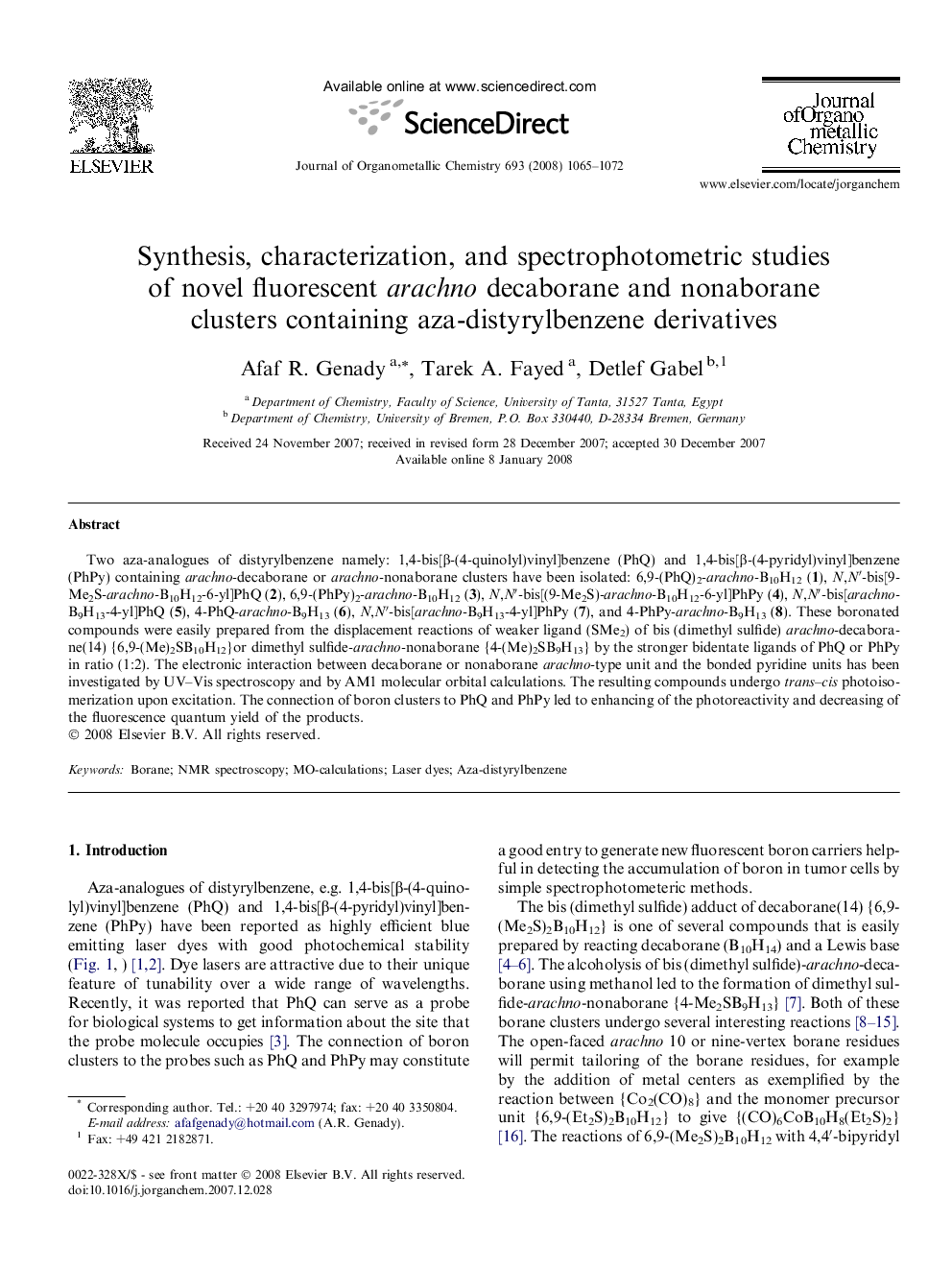| Article ID | Journal | Published Year | Pages | File Type |
|---|---|---|---|---|
| 1326035 | Journal of Organometallic Chemistry | 2008 | 8 Pages |
Two aza-analogues of distyrylbenzene namely: 1,4-bis[β-(4-quinolyl)vinyl]benzene (PhQ) and 1,4-bis[β-(4-pyridyl)vinyl]benzene (PhPy) containing arachno-decaborane or arachno-nonaborane clusters have been isolated: 6,9-(PhQ)2-arachno-B10H12 (1), N,N′-bis[9-Me2S-arachno-B10H12-6-yl]PhQ (2), 6,9-(PhPy)2-arachno-B10H12 (3), N,N′-bis[(9-Me2S)-arachno-B10H12-6-yl]PhPy (4), N,N′-bis[arachno-B9H13-4-yl]PhQ (5), 4-PhQ-arachno-B9H13 (6), N,N′-bis[arachno-B9H13-4-yl]PhPy (7), and 4-PhPy-arachno-B9H13 (8). These boronated compounds were easily prepared from the displacement reactions of weaker ligand (SMe2) of bis (dimethyl sulfide) arachno-decaborane(14) {6,9-(Me)2SB10H12}or dimethyl sulfide-arachno-nonaborane {4-(Me)2SB9H13} by the stronger bidentate ligands of PhQ or PhPy in ratio (1:2). The electronic interaction between decaborane or nonaborane arachno-type unit and the bonded pyridine units has been investigated by UV–Vis spectroscopy and by AM1 molecular orbital calculations. The resulting compounds undergo trans–cis photoisomerization upon excitation. The connection of boron clusters to PhQ and PhPy led to enhancing of the photoreactivity and decreasing of the fluorescence quantum yield of the products.
Graphical abstractDistyrylbenzene analogues containing arachno-borane clusters have been synthesized. The resulting compounds undergo trans–cis photoisomerization upon excitation.Figure optionsDownload full-size imageDownload as PowerPoint slide
